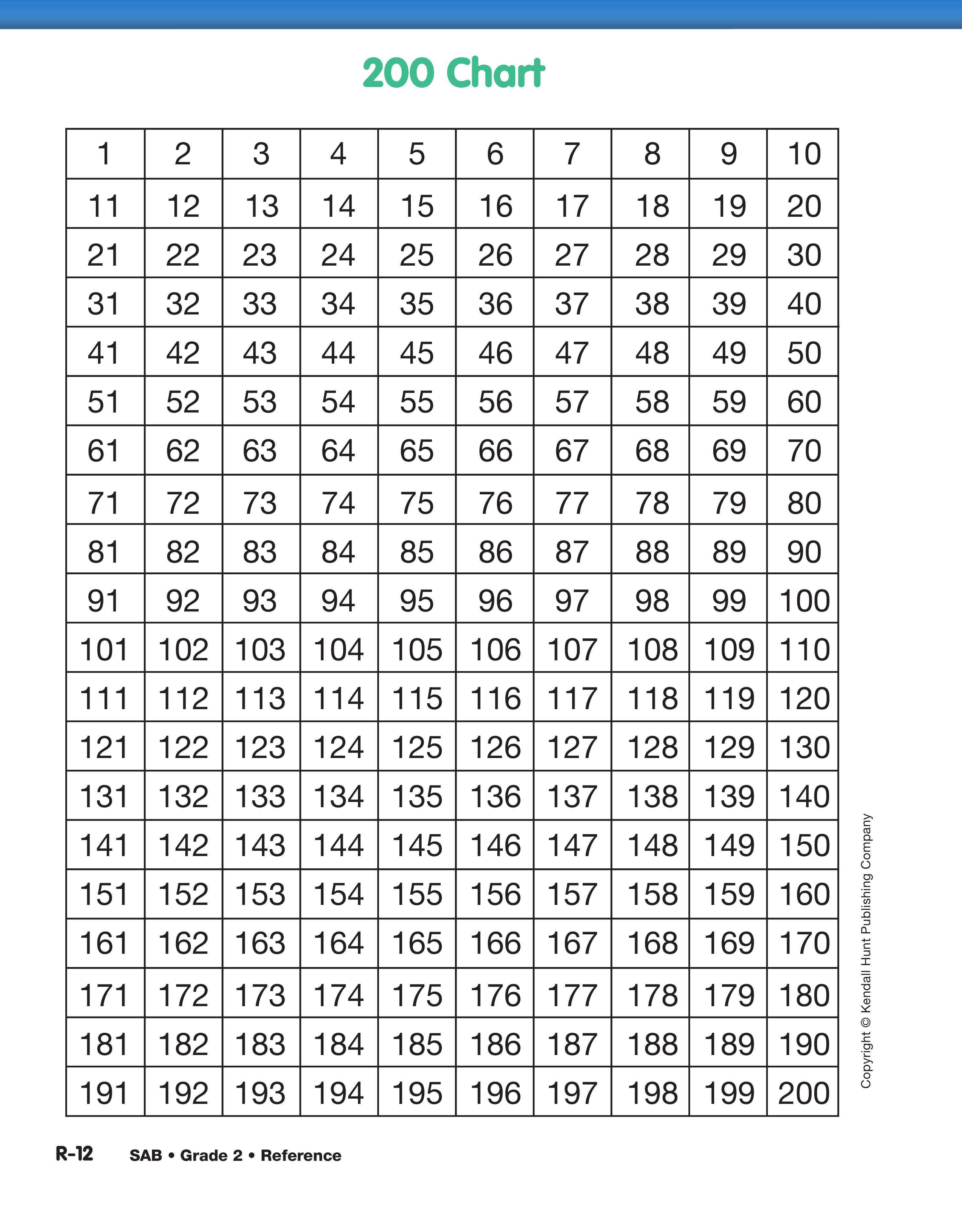Moves on the 200 Chart
Est. Class Sessions: 2–3Developing the Lesson
Part 1: Moving on the 200 Chart
Display and direct students to the 200 Chart page in the Student Activity Book Reference section. Remind students that a row is a horizontal line of numbers and a column is a vertical line of numbers. Ask students to make moves on the 200 Chart. Have students circle the target numbers and touch the numbers as they count.
Some possible prompts with 46 as the target number are:
Each time a move is made, ask students to share how they found their answer. For example, to find which number is 3 more than 46 a student may circle 46 and touch the numbers as they count aloud: (start at 46), count “1” (touch 47), count “2” (touch 48), count “3” (touch 49).
To answer 10 more than 46, students may count by ones or move to the number in the square below it to count by ten. If students are still counting by ones, ask if there is another way or quicker way to use the 200 Chart to get an answer.
A problem like 5 more than 46 is more difficult because the counter has to drop down a row after reaching 50 and start on the left to find 51. Point out to students that this is just what they do when they come to the end of a row on a calendar.
Have a similar conversation about finding two less than 46 and ten less than 46. Subtracting means going backwards. To find two less, students count back two across a row. To find ten less they can either count back by ones or move exactly one row above.
Repeat the prompts with different numbers. Gradually move into numbers greater than 100 and into larger moves (e.g., 40 more).















